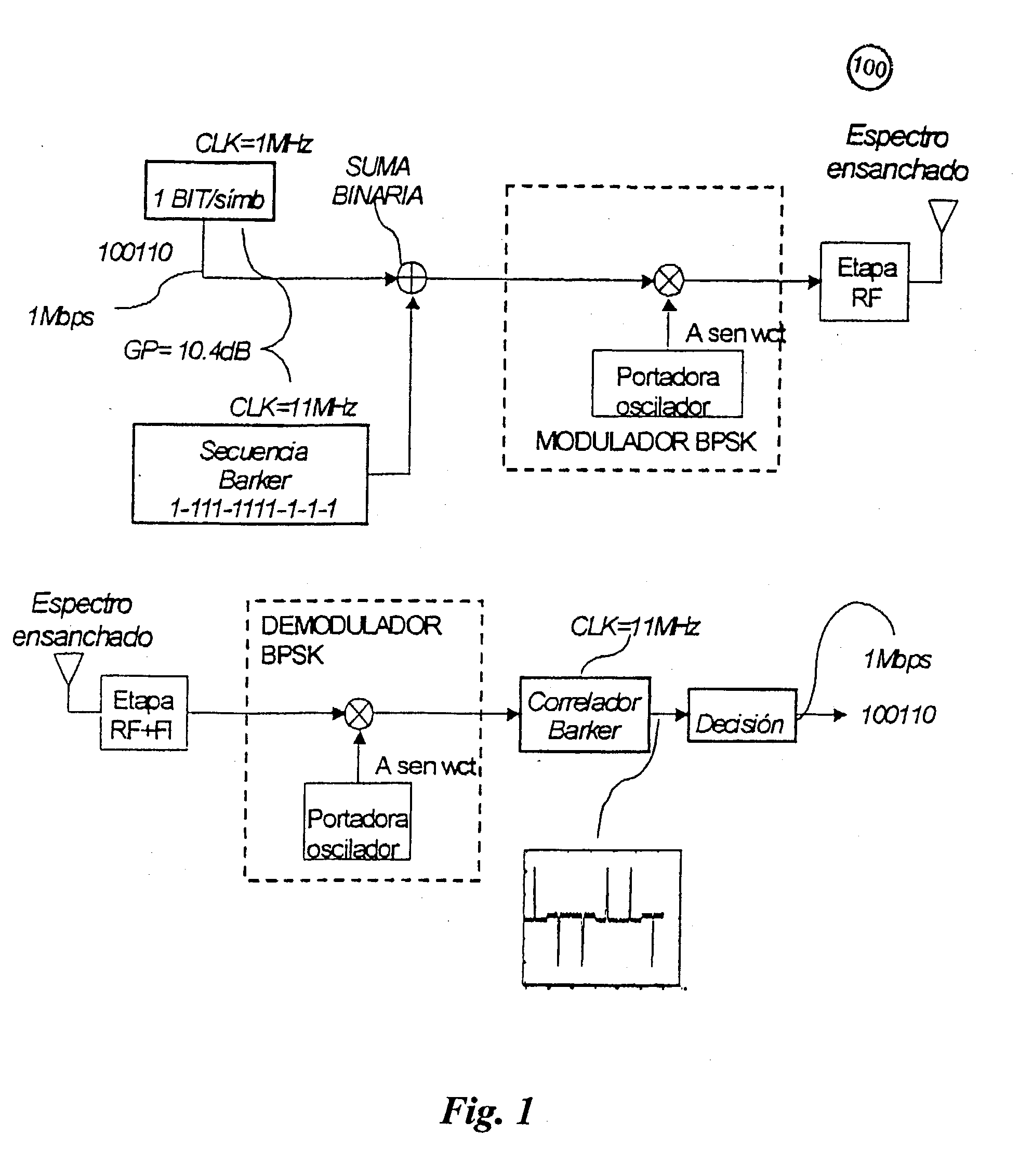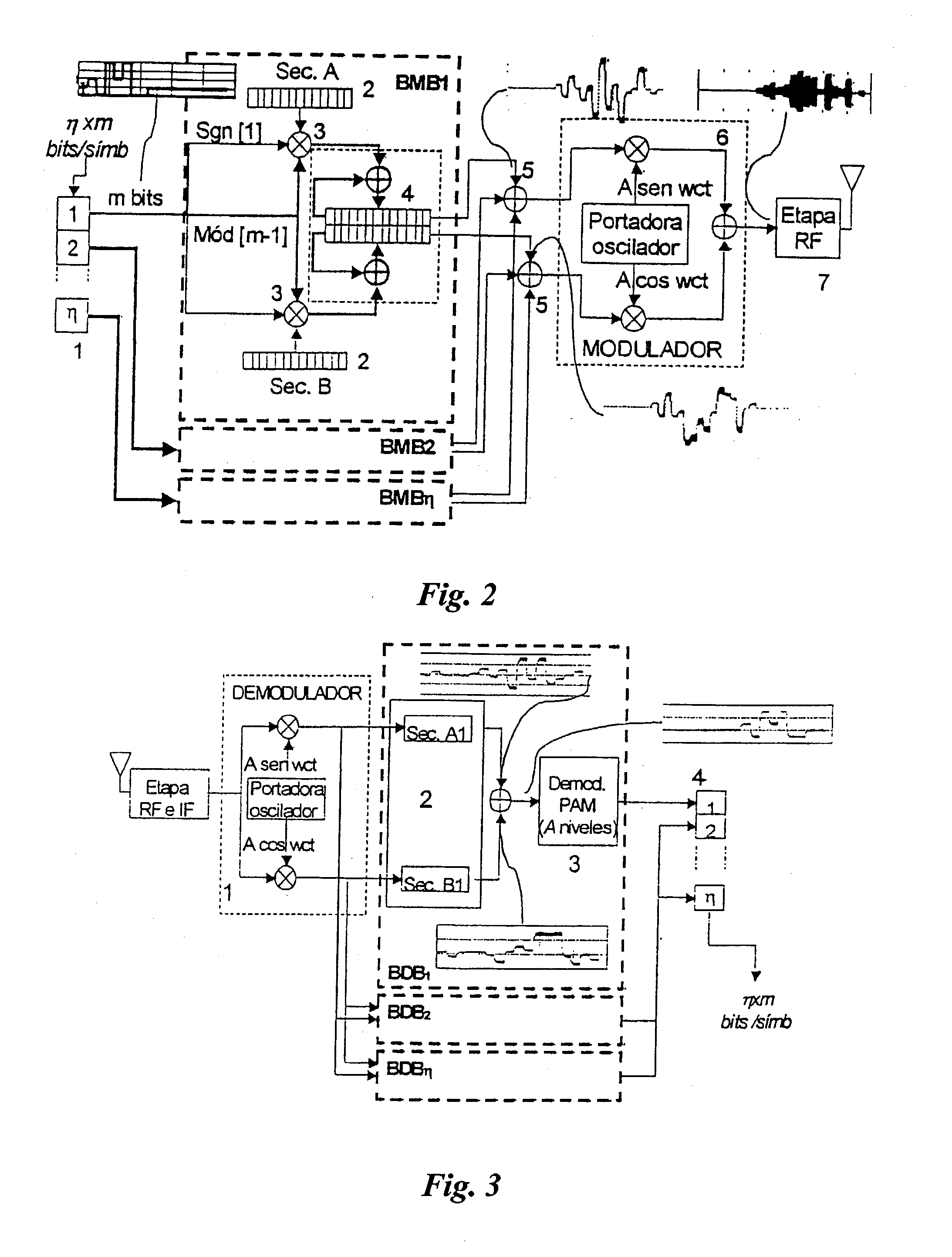Method, transmitter and receiver for spread-spectrum digital communication by golay complementary sequence modulation
a complementary sequence and digital communication technology, applied in the field of modulation and demodulation methods as well as the transmitter and receiver, can solve the problems of increasing the restriction of this technique and the decrease of the signal to noise ratio during reception
- Summary
- Abstract
- Description
- Claims
- Application Information
AI Technical Summary
Benefits of technology
Problems solved by technology
Method used
Image
Examples
embodiment
PREFERRED EMBODIMENT
[0034] A possible embodiment of this method applied to a end-to-end open-air radio communication system is shown below. For reasons of clarity the implementation in the case of a QPSK transmitter (N=4) is outlined in FIG. 2, performing data modulation using Golay sequences, amplitude modulated by means of A amplitudes. Therefore, by applying the formula (1.2), the transmission rate will be:
C=.multidot.log.sub.2A.multidot.(B / 2)bits / sec. (1.3)
[0035] In accordance with what has been explained above, the starting point is a set of pairs of Golay sequences of M bits generated and stored in the transmitter by means of, generally, 2.times. binary registers (values 1 and -1) which we aim to amplitude modulate with A amplitudes and with 4 Q PSK phases (4-PSK). In the same FIG. 2 one of the basic modulator blocks (BMB) of which the transmitter consists is shown in detail.
[0036] The transmitter performs the following operations where R is the transmission rate in symbols:
[0...
PUM
 Login to View More
Login to View More Abstract
Description
Claims
Application Information
 Login to View More
Login to View More - R&D
- Intellectual Property
- Life Sciences
- Materials
- Tech Scout
- Unparalleled Data Quality
- Higher Quality Content
- 60% Fewer Hallucinations
Browse by: Latest US Patents, China's latest patents, Technical Efficacy Thesaurus, Application Domain, Technology Topic, Popular Technical Reports.
© 2025 PatSnap. All rights reserved.Legal|Privacy policy|Modern Slavery Act Transparency Statement|Sitemap|About US| Contact US: help@patsnap.com



